
How to Save on Energy Costs When Growing Cannabis Indoors
High-intensity lighting, ventilation and air filtering, heating and cooling: Growing cannabis indoors requires a lot of energy. It's not just about the monthly bill for the grower, but the overall environmental impact too. Weed cultivation uses up about 1% of total US electricity. Here's how to make your grow greener and save money in the process.
Our beloved green herb is not so green after all, at least if one looks at the environmental impact of indoor cultivation. Considering the energy input it takes to make weed plants happy, it comes out to one kilogram of bud producing three tonnes of CO₂. This isn’t just bad for the environment, but also comes with huge financial costs. According to estimates, production and distribution of weed costs about 5 billion dollars per year—and that’s in the US alone.
The Importance of Saving Energy When Growing Cannabis
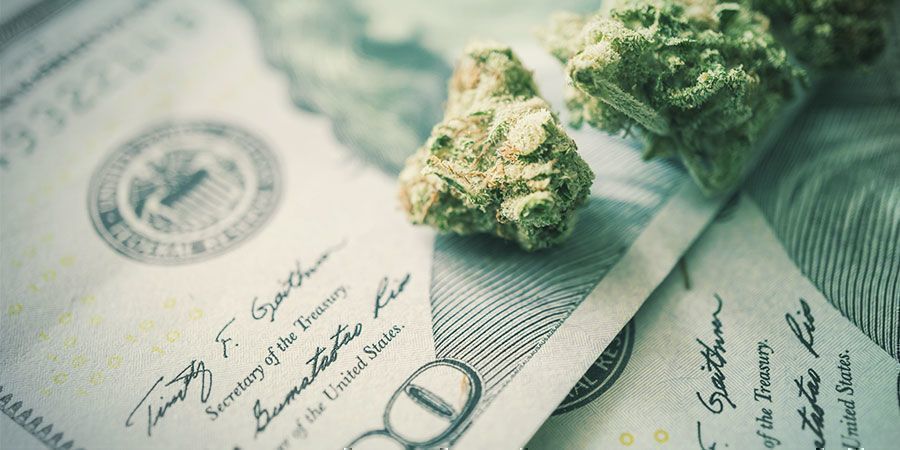
Growing cannabis indoors isn’t something we have been doing for a long time. In fact, it’s a recent development that has largely been driven by prohibition. Because one cannot easily hide large crops out in a field, most cannabis production has moved inside, where it’s much easier to keep hidden.
As cannabis reform sweeps the globe, cannabis cultivation is becoming a massive industry—even larger than it was during its illegal days. Legal large-scale grows are sprouting up in many places, consuming exponential amounts of energy. Likewise, home grows are legal or decriminalised in numerous regions, which further drives up these numbers.
No doubt, reducing energy consumption will have an enormous positive impact on cannabis cultivation as a whole. Growing “green” won’t just greatly benefit the environment, but will also reduce expenses for individual growers.
 The Footprint of the Grow Room
The Footprint of the Grow Room
Indoor growing setups harness a lot of power-hungry equipment in order to enhance yields and keep things running smoothly. A fully fledged indoor grow-op in a small 1.2 x 1.2 x 2.4m grow area will consume about 13,000 KWh of electricity a year. Now consider that professional grows can easily have 10 times more space, which dramatically increases costs both financially and environmentally.
 How Much Energy Is Inside a Joint?
How Much Energy Is Inside a Joint?
Breaking down these numbers into a single joint is quite revealing. One joint made from indoor-grown cannabis in the US is responsible for causing 1kg of carbon dioxide emissions, the equivalent to running a 100 watt light bulb for 17 hours.
It is worth noting that these energy costs and emissions don't take into account the energy required to produce fertilisers, water, equipment, and other materials used in a cannabis grow room.
How to Save Energy Costs When Growing Cannabis Indoors
Undoubtedly, growing cannabis brings with it substantial environmental burdens and costs. But this doesn’t mean that individual growers can’t do something about it. Indeed, there are several ways growers can minimise energy consumption when growing cannabis.
Adjust the Size of Your Grow to Your Needs
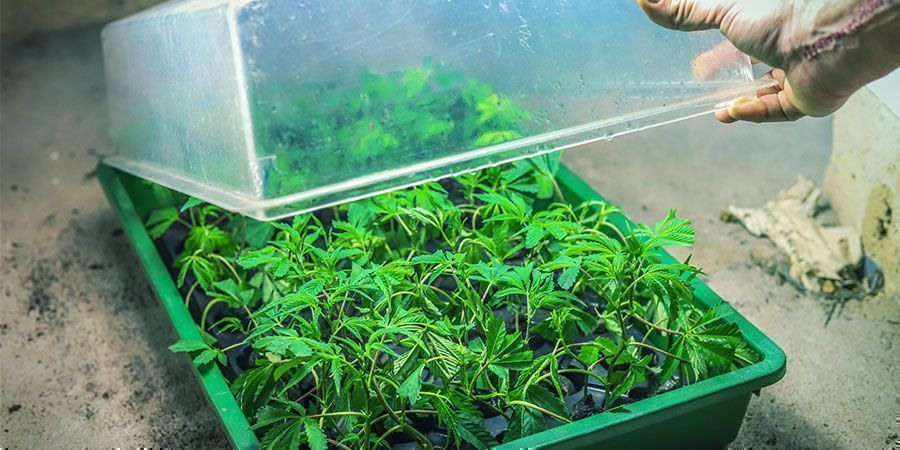
This one will have the biggest impact on your energy costs: Grow only as much bud as you actually need.
If you’re enjoying cannabis, you’ll normally have an idea of how much bud you are consuming. Let’s say you’re using about 30g of bud per month. One single autoflower can easily produce this amount in its typical life cycle of about 8 weeks. If you’re growing four of these, you will be well-stocked for four months.
You won’t need a large space if you’re only growing four small autoflowers. Plus, you could grow for two months, bring in your harvest, and then take a break for two months. That’s two months where you won’t use energy on growing weed!
There are additional ways you can fine-tune your grow-op to be more energy efficient. For example, if you tend to grow autoflowers on an 18–24-hour light schedule, you could switch to photoperiods instead, which will only need 12 hours of light during bloom.
Improve Insulation
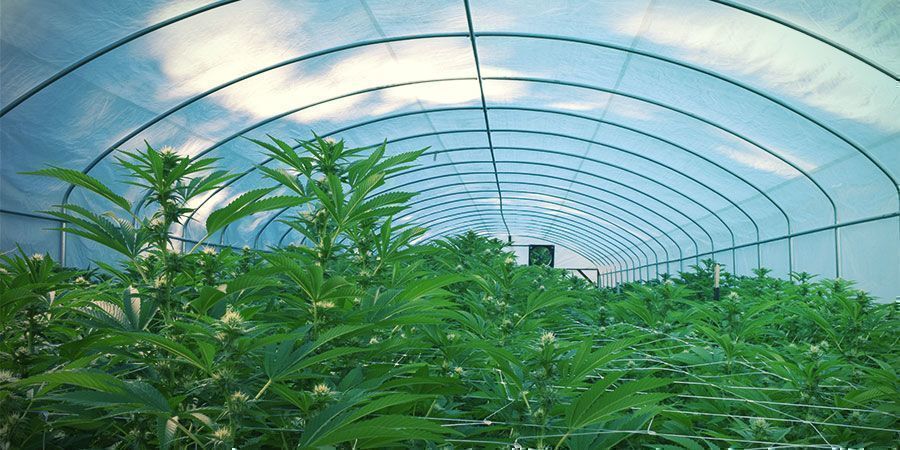
You will waste a lot of energy if your grow room, greenhouse, tent, etc. isn’t properly insulated. This especially applies if you have a heater/air conditioner to keep your grow room temps in check. In addition to using Styrofoam wall panelling to insulate doors and windows, you'll also want to insulate any type of piping that may exist in your room. This can help reduce unnecessary running of your AC or heater.
Find the Most Efficient Lighting Solution
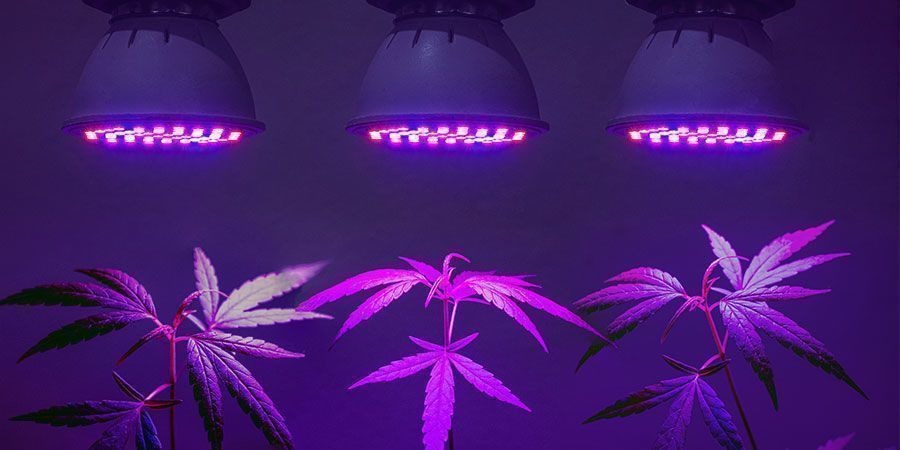
The right type of grow lights can make a huge difference, and in more ways than one: For instance, a powerful HPS light doesn’t just use more electricity compared to a newer LED fixture; it also emits way more heat, which will drive up the temperature in your grow room. This burden is made worse if you have to use additional cooling to compensate for the heat.
So consider switching to LED grow lights instead. LEDs have come a long way and easily rival other grow lights in terms of light output, yet they use considerably less energy and generate significantly less heat.
- Calculating Your Light Requirements
To use your grow lights efficiently, you’ll want to calculate your lighting requirements. In other words, you’ll want to maximise light exposure while minimising waste. So, how is this achieved? Well, you can do it like the pros:
Expert horticulturists use values such as photosynthetic photon flux density (PPFD) and daily light integral (DLI) to optimise their lighting setups. PPFD measures the number of photons in the visible light spectrum that fall on the plants per second, while DLI measures the amount of light the plants receive per day.
Using these numbers, you can see if your plants are receiving more light than they actually need, and adjust to suit. For example, you may find an 18/6 vegging schedule to actually be excessive, when your plants may do just as well with only 16 hours.
Alternatively, if you can’t measure the PPFD of your area (after all, you’d need special equipment to do this) look into how you can reduce light intensity in other ways. Cannabis only needs full-strength light during bloom. For seedlings and young plants, you may be okay with using CFLs, which don’t use much power. Likewise, modern LED grow lights often come with a dimmer or a veg/flower switch that allows you to adjust their light output.
Optimise Climate Control
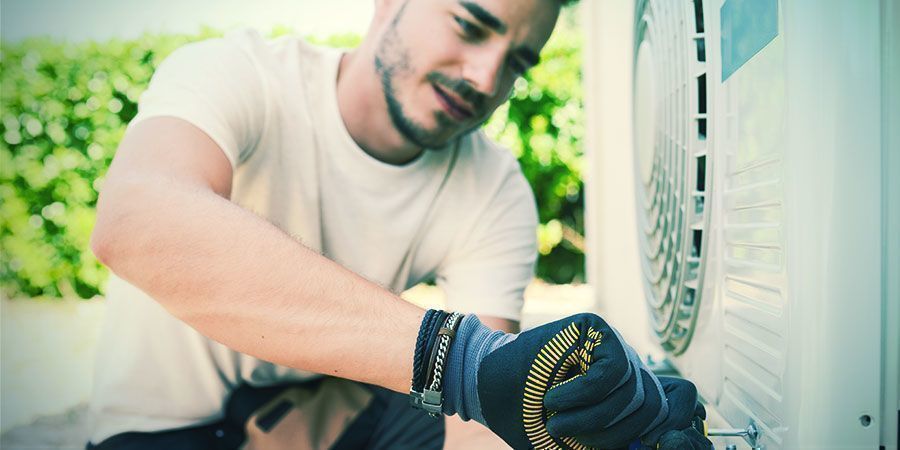
Heater, coolers, and (de)humidifiers don’t constantly need to run at full blast. There is significant room for energy optimisation. Professional greenhouse growers use a value called vapor pressure deficit or VPD. The VPD indicates the difference between the amount of moisture in the air and how much moisture the air can hold when it is saturated. This knowledge can be used to achieve the optimal climate for your grow room. This will benefit your plant’s health and your energy expenditure.
- Consider an Integrated Climate Control System
An integrated climate control system involves much more than simply just putting a heater or external A/C into your grow room. An ICCS can really be the heart of your entire grow-op as it can intelligently control the other equipment in the grow room. A good example of this is using an integrated climate control system to temporarily switch off your exhausts so you won’t waste CO₂.
But simple things can sometimes also be effective for optimising your grow room climate. One example is running an ordinary standing fan and/or opening a window or door to let a breeze in. This may be enough to save you the need to run additional cooling.
Monitor Energy Consumption
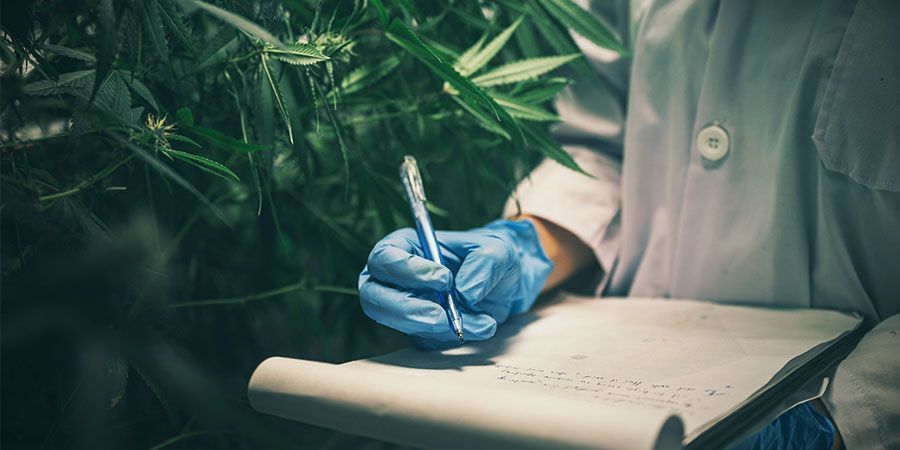
Strategically monitor how much energy you’re using for your grow. Make plans, control consumption, review results, and make adequate changes.
- Make Plans
Establish energy-spending goals that you plan to meet. Obviously, doing so will warrant that you know about relevant factors: Look into your energy costs per KW/h and how much energy individual equipment is using. If you don’t know these metrics, this is all a guessing game and will make saving energy much more difficult.
Consider: What was your energy consumption in previous months? Plan and see whether you can improve on that. Even small improvements will go a long way.
- Control Consumption
Based on your knowledge of energy consumption, make appropriate changes. For instance, switch your grow lights for more energy-efficient types (LEDs), reduce light hours, instal climate control, and so forth. Look into all the factors where you can assert control, and exploit them to reduce energy consumption.
- Review Results
Don’t just pay your energy bill every month without actually knowing what you’re paying and why. Once you've set your goals, check whether you’re achieving them the next time you get your bill. Only when you go over and understand your energy bill you can actually get an idea of whether your cost-saving tactics are actually working.
- Make Adequate Changes
Energy bills not showing much of an improvement? Take it as an opportunity to make further changes. There may still be room for tweaking your energy output! If you’re feeling lost at some point and don’t know where else to improve, consider consulting an expert.
Save Water
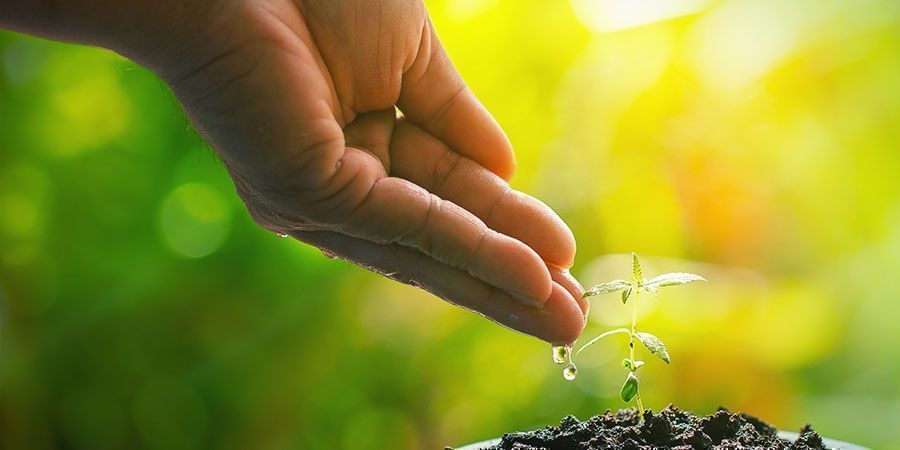
In addition to cutting down on your electricity usage, you can also lower your environmental footprint, and your expenses, by saving water. Here are several ways to go about doing so:
- Water Only When Necessary
Don’t water your plants on a schedule, but instead only when they need it. Lift up your pots to determine when to water. Water only when the pots are noticeably light. Even better, use sensors to do the hard work for you.
Hand-watering may not seem like a big deal. Yet, overwatering is among the most frequent mistakes made by growers. Rather than hand-watering, consider an irrigation system. Once set up and properly dialled in, such a system can greatly reduce water waste. Plus, it can greatly benefit the health of your cannabis.
- Recirculate Water for Future Use
“Drain-to-waste” watering, as one typically does, is highly wasteful. Save water and nutrients by growing hydroponically. Hydroponic systems that utilise a tank recirculate water and nutrients, which will result in significant savings. It is also much more environmentally friendly than wasting large amounts of nutrients and water.
- Test Your Water
Knowing your water’s pH level, as well as its mineral contents (amounts of iron, calcium, magnesium, etc.), allows you to fine-tune your nutrient levels. Plus, it will tell you whether the water is actually safe to use, or if it needs filtering or reverse osmosis. Don’t just test your water once, but do so frequently. Adjust pH and nutrient levels accordingly.
Perform Regular Maintenance

A modern grow room is pretty much like a high-tech lab, and you want all your equipment operating at its full capacity. The only way to ensure that is with regular maintenance. Irrigation and hydroponic systems in particular will need regular cleaning. Filters and valves will need regular replacement, and your system will need a cleaning “flush” once in a while as part of regular maintenance. Likewise, keep your grow room as clean as possible. This will help reduce the chance of equipment failures.
How to Save Energy Costs in the Long-Run
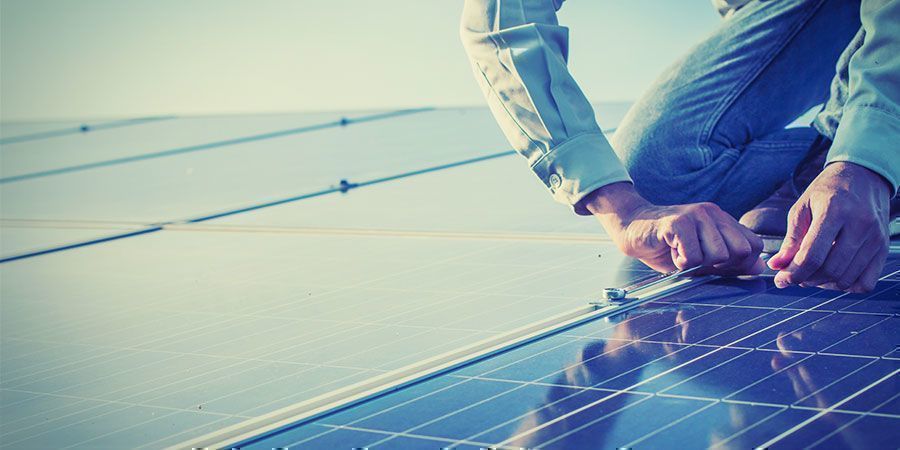
The tips mentioned above will greatly help you cut down on energy costs. But maybe you decide at some point that this is still not enough, and you want to go the greenest route possible. Well, there are two ways you can go about doing that.
The first option is to go green and instal solar panels as a long-term solution to reduce your energy costs. Yes, there will be initial costs, but these will soon be offset by what you’ll be saving over time. Plus, it will be great if you are able to grow cannabis entirely off the grid!
If this seems too involved or cost is an issue, there is an even easier way to grow your cannabis with a low-energy footprint: move outdoors.
Grow Cannabis Outdoors for a Simple Way to Save Money
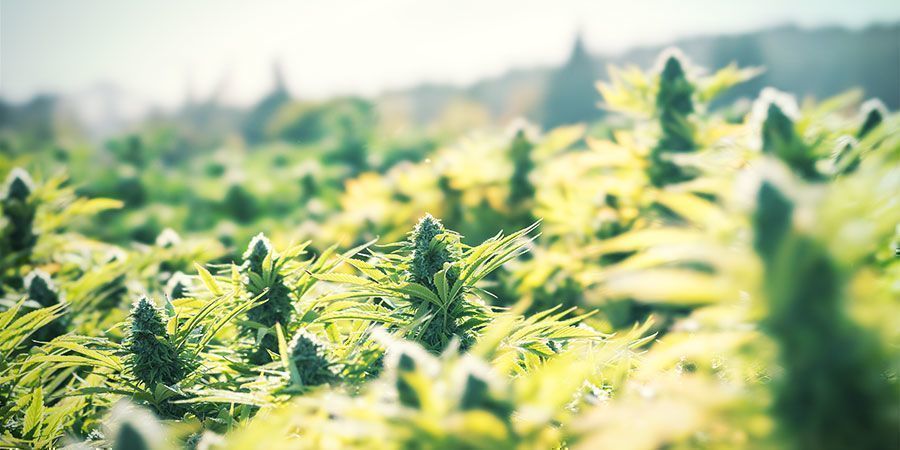
If the option is available to you, move your indoor crop outdoors to grow as nature intended, and without the costs of operating an indoor grow-op.
As one more step up, you can set up a greenhouse. Yes, this will require an investment at the start too, but will be well worth it. Ultimately, a greenhouse can provide you and your plants with the benefits of growing indoors—i.e. a more controlled environment—along with those of growing outdoors (the sun). You can grow top cannabis while saving energy and money you’d otherwise be spending on an indoor grow.
Finally, to ensure your outdoor grow is a smashing success, see our list of the Top 10 feminized outdoor cannabis strains.
-
 4 min
April 13, 2021
Indoor Vs Outdoor Weed: Which Is Better?
Hours can be spent trawling the internet to decide whether you should grow indoors or outdoors. Is it the case that indoor plants are more potent? Will you get better yields outdoors? These are...
4 min
April 13, 2021
Indoor Vs Outdoor Weed: Which Is Better?
Hours can be spent trawling the internet to decide whether you should grow indoors or outdoors. Is it the case that indoor plants are more potent? Will you get better yields outdoors? These are...
-
 4 min
May 24, 2020
How To Smoke Weed On A Budget
Bills are piling up, your weed stash is shrinking, and your next paycheck is still some days away. Oh, the horror! But don’t despair, here are some tips on how to smoke weed on a budget.
4 min
May 24, 2020
How To Smoke Weed On A Budget
Bills are piling up, your weed stash is shrinking, and your next paycheck is still some days away. Oh, the horror! But don’t despair, here are some tips on how to smoke weed on a budget.
-
 6 min
February 17, 2020
How To Grow Weed On A Budget Indoors And Outdoors
Your first cannabis grow doesn't have to break the bank. Cannabis can be grown cheaply and efficiently, giving you a good idea if the hobby is for you.
6 min
February 17, 2020
How To Grow Weed On A Budget Indoors And Outdoors
Your first cannabis grow doesn't have to break the bank. Cannabis can be grown cheaply and efficiently, giving you a good idea if the hobby is for you.
-
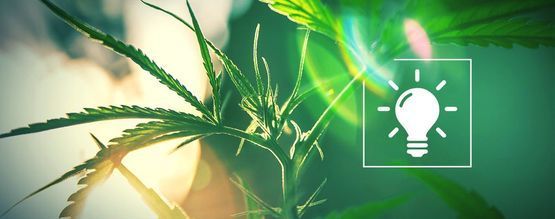 7 min
June 13, 2019
Choosing The Right Light For Your Grow-Op
Cannabis plants have many demands, but none quite as important as lighting. A good set of lights are needed to ensure plants can photosynthesise properly and make enough energy to survive and...
7 min
June 13, 2019
Choosing The Right Light For Your Grow-Op
Cannabis plants have many demands, but none quite as important as lighting. A good set of lights are needed to ensure plants can photosynthesise properly and make enough energy to survive and...











 United States
United States








